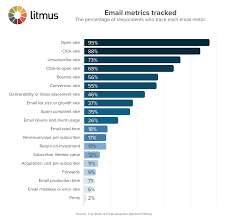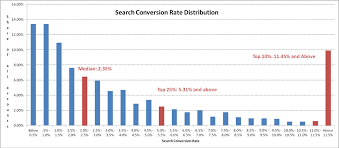Email Marketing Metrics: Measuring Success in the Inbox
In today’s digital landscape, email marketing remains a powerful tool for businesses to engage with their audience and drive conversions. However, to truly harness the potential of email marketing, it is crucial to understand and measure its effectiveness through various metrics. These metrics provide valuable insights into the performance of your campaigns and enable you to make data-driven decisions for future success.
Open Rate:
The open rate is one of the fundamental metrics in email marketing. It measures the percentage of recipients who opened your email. A high open rate indicates that your subject line and preheader were compelling enough to grab attention. To improve open rates, consider personalizing subject lines, testing different approaches, and ensuring that your emails are mobile-friendly.
Click-Through Rate (CTR):
The click-through rate measures the percentage of recipients who clicked on a link within your email. It indicates how engaging and relevant your content is to the audience. A higher CTR suggests that your call-to-action (CTA) was effective in driving users to take action. To boost CTR, optimize your CTAs, use clear and concise copy, and ensure that links are prominently displayed.
Conversion Rate:
Ultimately, conversions are what matter most in email marketing. The conversion rate measures the percentage of recipients who completed a desired action after clicking through from your email. This could be making a purchase, signing up for a webinar, or downloading an e-book. Tracking conversion rates allows you to evaluate the effectiveness of your email campaigns in driving real business results.
Bounce Rate:
The bounce rate indicates the percentage of emails that were not successfully delivered to recipients’ inboxes. There are two types of bounces: hard bounces (permanent delivery failures) and soft bounces (temporary delivery issues). A high bounce rate may indicate problems with your mailing list quality or deliverability issues. Regularly clean up your mailing list by removing invalid or inactive email addresses to minimize bounce rates.
Unsubscribe Rate:
The unsubscribe rate measures the percentage of recipients who choose to opt-out of your email communications. While it’s natural to be concerned about losing subscribers, an unsubscribe rate can provide insights into the relevance and quality of your content. Monitor this metric closely and analyze feedback from unsubscribers to improve your email strategy and better align with your audience’s preferences.
ROI (Return on Investment):
Measuring the return on investment is crucial in determining the overall success of your email marketing efforts. By tracking the revenue generated from your campaigns and comparing it to the costs incurred, you can assess whether your email marketing strategy is delivering a positive return. Consider factors such as increased sales, customer retention, and lifetime value when calculating ROI.
A/B Testing:
A/B testing involves creating two variations of an email campaign (e.g., different subject lines, content layouts, or CTAs) and sending them to different segments of your audience. By comparing the performance of these variations, you can identify which elements resonate best with your subscribers and optimize future campaigns accordingly.
In conclusion, email marketing metrics provide valuable insights into the effectiveness of your campaigns and allow you to make informed decisions for continuous improvement. By regularly monitoring key metrics such as open rate, click-through rate, conversion rate, bounce rate, unsubscribe rate, ROI, and utilizing A/B testing techniques, you can refine your strategies and achieve greater success in engaging with your audience through their inbox. Remember that these metrics are not standalone indicators but rather pieces of a puzzle that help you understand the bigger picture of how well you are connecting with your subscribers.
8 Frequently Asked Questions About Email Marketing Metrics (UK)
- What are the key email marketing metrics I should be tracking?
- How do I measure email open rates?
- What is a good email click-through rate?
- How can I calculate my return on investment (ROI) from email marketing?
- What is an average unsubscribe rate for emails?
- How do I track the performance of my email campaigns?
- How can I segment my contact list to improve engagement with emails?
- What techniques can I use to increase the effectiveness of my emails?
What are the key email marketing metrics I should be tracking?
When it comes to email marketing, several key metrics can provide valuable insights into the effectiveness of your campaigns. Here are the key email marketing metrics you should be tracking:
- Open Rate: This metric measures the percentage of recipients who open your email. It helps gauge the effectiveness of your subject lines and preheaders in grabbing attention and enticing recipients to engage with your content.
- Click-Through Rate (CTR): CTR measures the percentage of recipients who click on a link within your email. It indicates how engaging and relevant your content is to the audience, as well as the effectiveness of your call-to-action (CTA).
- Conversion Rate: Conversion rate measures the percentage of recipients who complete a desired action after clicking through from your email. This action could be making a purchase, signing up for a webinar, or downloading an e-book. Tracking conversion rates allows you to evaluate the effectiveness of your email campaigns in driving real business results.
- Bounce Rate: Bounce rate indicates the percentage of emails that were not successfully delivered to recipients’ inboxes. There are two types of bounces: hard bounces (permanent delivery failures) and soft bounces (temporary delivery issues). A high bounce rate may indicate problems with your mailing list quality or deliverability issues.
- Unsubscribe Rate: Unsubscribe rate measures the percentage of recipients who choose to opt-out of your email communications. While it’s natural to be concerned about losing subscribers, tracking this metric provides insights into the relevance and quality of your content.
- ROI (Return on Investment): Measuring ROI helps determine the overall success of your email marketing efforts by comparing revenue generated from campaigns against costs incurred. Consider factors such as increased sales, customer retention, and lifetime value when calculating ROI.
- List Growth Rate: List growth rate tracks how quickly your subscriber list is expanding over time. It allows you to assess whether you’re effectively attracting new subscribers and retaining existing ones.
- Spam Complaint Rate: This metric measures the percentage of recipients who mark your email as spam. A high spam complaint rate can negatively impact your sender reputation and deliverability. Monitoring this metric helps you ensure that your emails are meeting the expectations of your audience.
- Engagement Metrics: Engagement metrics include metrics like time spent reading an email, scroll depth, and social media shares. These metrics provide insights into how well your content resonates with recipients and can help you optimize future campaigns.
Remember, these metrics work together to give you a comprehensive view of your email marketing performance. By regularly tracking and analyzing these key metrics, you can make data-driven decisions to improve the effectiveness of your campaigns and achieve better results.
How do I measure email open rates?
Measuring email open rates is a crucial step in understanding the effectiveness of your email campaigns. Here’s how you can measure email open rates:
- Use an Email Service Provider (ESP): If you’re using an ESP, such as Mailchimp, Constant Contact, or Sendinblue, they will typically provide built-in tracking capabilities. These platforms automatically track and report open rates for your email campaigns.
- Insert Tracking Pixels: ESPs often generate a small tracking pixel or image that you can insert into your emails. When the recipient opens the email, the image is loaded from the server, and this action is recorded as an open. The tracking pixel works invisibly to the recipient.
- Set Up UTM Parameters: You can add UTM parameters to the links within your emails to track opens indirectly. By appending unique UTM codes to each link, you can monitor traffic coming from those links in your website analytics tool (e.g., Google Analytics). Although this method doesn’t directly measure opens, it provides insights into engagement after the recipient has clicked through from the email.
- Analyze Email Client Data: Some ESPs provide information on which email clients are used by recipients when opening your emails. This data helps you understand if certain email clients have higher or lower open rates, allowing you to optimize future campaigns accordingly.
It’s important to note that while measuring open rates provides valuable insights into engagement levels, it’s not always 100% accurate due to various factors like images being disabled by default in some email clients or recipients simply previewing emails without fully opening them.
To calculate your open rate:
Open Rate = (Unique Opens / Delivered Emails) x 100
By regularly monitoring and analyzing open rates for different campaigns and segments of your audience, you can gain insights into what subject lines and content resonate best with your subscribers and make data-driven decisions to improve your future email marketing efforts.
What is a good email click-through rate?
A good email click-through rate (CTR) can vary depending on factors such as industry, audience, and the type of email campaign. However, as a general benchmark, an average email CTR falls between 2-3%. Anything above this range can be considered a good CTR.
It’s important to note that the effectiveness of your email campaigns should not solely be determined by CTR. While a higher CTR indicates that your content and call-to-action are engaging, other metrics like conversion rate and ROI should also be considered to assess the overall success of your campaigns.
To improve your email CTR, consider implementing strategies such as personalization, compelling subject lines, clear and concise copy, prominent CTAs, mobile optimization, and A/B testing to identify what resonates best with your audience. Regularly monitoring and analyzing your CTR will help you gauge the effectiveness of your email marketing efforts and make informed decisions for future campaigns.
How can I calculate my return on investment (ROI) from email marketing?
Calculating your return on investment (ROI) from email marketing involves measuring the revenue generated from your email campaigns and comparing it to the costs incurred. Here’s a simple formula to help you calculate your email marketing ROI:
Determine Revenue Generated:
Start by identifying the revenue directly attributed to your email marketing efforts. This could include sales made as a result of email campaigns, upsells or cross-sells, and any other measurable actions that contribute to your business’s bottom line.
Calculate Costs:
Calculate the total costs associated with your email marketing campaigns. This may include expenses such as email service provider fees, design and copywriting costs, list management expenses, and any other relevant costs directly related to running your email campaigns.
Subtract Costs from Revenue:
Subtract the total costs from the revenue generated to determine your net profit.
Divide Net Profit by Costs:
Divide the net profit by the total costs and multiply by 100 to get a percentage value.
ROI = (Net Profit / Total Costs) x 100
For example, if you generated £10,000 in revenue from an email campaign that cost you £2,000 to execute:
ROI = (£10,000 – £2,000) / £2,000 x 100
= £8,000 / £2,000 x 100
= 400%
In this example, your ROI would be 400%, indicating that for every pound spent on email marketing, you earned four times that amount in revenue.
Remember that ROI is not solely based on immediate sales but can also consider factors like customer retention and lifetime value. It’s important to track these metrics over time and compare them with previous campaigns or other marketing channels to gain insights into the effectiveness of your email marketing efforts.
Additionally, consider tracking specific goals or key performance indicators (KPIs) relevant to your business objectives when calculating ROI. This will provide a more comprehensive understanding of how email marketing contributes to your overall success.
What is an average unsubscribe rate for emails?
The average unsubscribe rate for emails can vary depending on various factors such as industry, audience, email frequency, and the quality of the email list. However, as a general guideline, an unsubscribe rate of around 0.2% to 0.5% is considered typical for most industries.
It’s important to note that unsubscribe rates can fluctuate and may be higher or lower based on specific circumstances. Factors like the relevance of your content, frequency of emails sent, and how well you segment your audience can impact unsubscribe rates.
Monitoring your unsubscribe rate over time and comparing it to industry benchmarks can help you gauge the effectiveness of your email campaigns and identify areas for improvement. If your unsubscribe rate consistently exceeds industry averages or experiences sudden spikes, it may be worth investigating to ensure you are delivering valuable content that resonates with your subscribers.
How do I track the performance of my email campaigns?
Tracking the performance of your email campaigns is essential to understanding their effectiveness and making data-driven decisions for improvement. Here are some methods and tools you can use to track the performance of your email campaigns:
Email Service Provider (ESP) Analytics:
Most email service providers offer built-in analytics tools that provide valuable insights into your campaign performance. These tools typically track metrics such as open rates, click-through rates, bounce rates, and unsubscribe rates. Check if your ESP provides these analytics and learn how to access and interpret the data.
UTM Parameters:
UTM parameters are tags added to the URLs in your email campaigns to track specific sources, mediums, and campaigns in Google Analytics or other web analytics platforms. By using UTM parameters, you can identify which emails are driving traffic to your website, conversions, or specific goals.
Conversion Tracking:
If your email campaign’s goal is to drive conversions (e.g., purchases or sign-ups), set up conversion tracking on your website or landing page using tools like Google Analytics or conversion tracking pixels provided by advertising platforms like Facebook Ads or Google Ads. This allows you to attribute conversions back to specific email campaigns.
Heatmaps and Click Maps:
Heatmap tools like Hotjar or Crazy Egg can provide visual representations of how recipients interact with your emails. They show where users click, how far they scroll, and which elements attract the most attention. Heatmaps help you understand user behavior within your emails and optimize layout and content accordingly.
A/B Testing:
A/B testing involves creating two variations of an email campaign with different elements (e.g., subject lines, content layouts, CTAs) and sending them to different segments of your audience. Compare the performance of these variations using the aforementioned tracking methods to determine which version performs better.
Surveys and Feedback:
Include surveys or feedback forms in your emails to gather direct feedback from recipients about their experience with your campaigns. Ask questions about content relevance, design, frequency, and overall satisfaction. This qualitative data can provide valuable insights into how your campaigns are perceived and what improvements can be made.
Remember to regularly analyze the data and metrics you collect. Look for trends, patterns, and areas for improvement. Use the insights gained to refine your email marketing strategy and optimize future campaigns for better performance.
How can I segment my contact list to improve engagement with emails?
Segmenting your contact list is a powerful strategy to improve engagement with your emails. By dividing your subscribers into smaller, more targeted groups based on specific criteria, you can deliver more relevant and personalized content to each segment. Here are some effective ways to segment your contact list:
- Demographics: Consider segmenting based on demographic factors such as age, gender, location, or job title. This allows you to tailor your messaging and offers to better resonate with each group’s unique characteristics.
- Purchase History: Segmenting based on past purchase behavior enables you to send targeted emails promoting related products or offering exclusive discounts to customers who have previously shown interest in specific categories or items.
- Engagement Level: Segment subscribers based on their level of engagement with your emails. Identify those who consistently open and click through versus those who rarely interact. This allows you to send re-engagement campaigns or exclusive content to rekindle the interest of less engaged subscribers.
- Interests and Preferences: Ask subscribers for their preferences during the sign-up process or through preference centers where they can update their interests over time. Use this information to create segments that receive content tailored specifically to their preferences.
- Behavior and Activity: Track subscriber behavior such as website visits, downloads, or webinar attendance. Segment based on these actions to send targeted follow-up emails that align with their demonstrated interests.
- Customer Lifecycle Stage: Segment contacts based on where they are in the customer journey—prospects, first-time buyers, loyal customers, etc. Tailor your messaging accordingly to nurture leads, encourage repeat purchases, or reward loyalty.
- Email Engagement: Analyze metrics like open rates and click-through rates to segment subscribers based on their engagement levels with previous campaigns. Send different variations of emails (e.g., subject lines, content) to test what resonates best with each segment.
Remember that effective segmentation requires accurate data collection and management systems. Ensure that you have the necessary tools and processes in place to collect, store, and update subscriber information accurately. Regularly review and refine your segments as your audience evolves and new data becomes available.
Segmentation allows you to deliver more personalized and targeted content, which leads to higher engagement, increased conversions, and ultimately, stronger relationships with your subscribers.
What techniques can I use to increase the effectiveness of my emails?
To increase the effectiveness of your emails and maximize their impact, consider implementing the following techniques:
- Personalization: Tailor your emails to individual recipients by using their names, referencing previous interactions or purchases, and segmenting your audience based on demographics or preferences. Personalized emails create a sense of relevance and connection, increasing engagement.
- Compelling Subject Lines: Craft attention-grabbing subject lines that entice recipients to open your emails. Experiment with different approaches such as posing questions, offering exclusive benefits, or creating a sense of urgency. A well-crafted subject line can significantly improve your open rates.
- Clear Call-to-Action (CTA): Make sure your email has a clear and prominent CTA that directs recipients towards the desired action. Use actionable language and design visually appealing buttons or links that are easy to spot. A compelling CTA increases click-through rates and drives conversions.
- Mobile Optimization: With the majority of people accessing emails on mobile devices, it’s crucial to optimize your emails for mobile viewing. Ensure they are responsive, load quickly, have legible fonts, and feature easily clickable buttons. Mobile-friendly emails enhance user experience and engagement.
- Engaging Content: Provide valuable content that resonates with your audience’s interests and needs. Whether it’s informative articles, exclusive offers, or entertaining stories, focus on delivering content that adds value to the recipient’s life. Engaging content keeps subscribers interested in future communications.
- Testing and Optimization: Conduct A/B testing by creating variations of your email campaigns (e.g., different subject lines, layouts, CTAs) and sending them to smaller segments of your audience. Analyze the performance metrics to identify what resonates best with your subscribers and optimize future campaigns accordingly.
- Consistency in Branding: Maintain consistent branding across all elements of your email – from the layout and color scheme to the tone of voice used in the copy. Consistency builds trust and familiarity with your brand, making it easier for recipients to recognize and engage with your emails.
- Email Automation: Utilize automation tools to send targeted emails based on specific triggers or actions, such as welcome emails, abandoned cart reminders, or personalized follow-ups. Automation allows you to deliver timely and relevant messages, nurturing leads and increasing conversions.
- List Hygiene: Regularly clean up your email list by removing invalid or inactive email addresses. This helps maintain a healthy deliverability rate and ensures that your messages reach engaged recipients who are more likely to respond positively.
- Analyze Metrics: Continuously monitor key metrics such as open rates, click-through rates, conversions, bounce rates, and unsubscribe rates. Analyzing these metrics provides insights into the performance of your campaigns and helps you identify areas for improvement.
By implementing these techniques and continuously refining your email marketing strategy based on data-driven insights, you can increase the effectiveness of your emails and achieve better engagement, conversions, and overall success in reaching your audience effectively.




